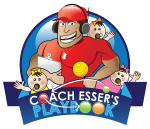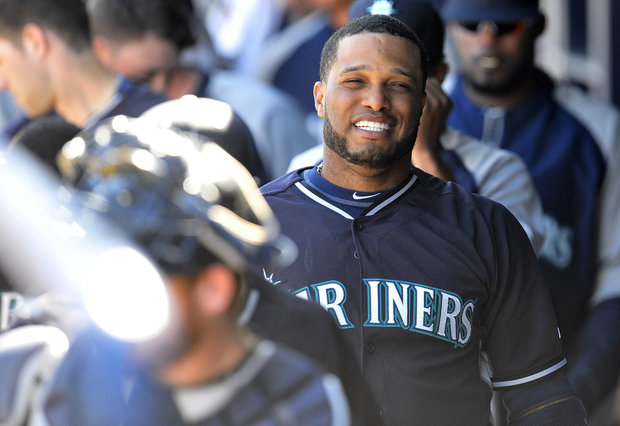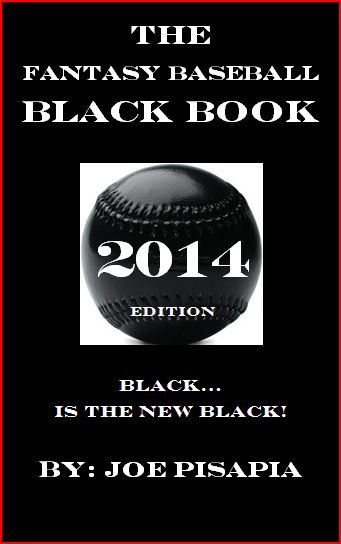Seattle Mariners Future
TheSeattle Mariners future is now folks. I thought they were a year or two away just as recently as the beginning of spring training, but they are becoming a team that can not be overlooked on the field, or int he box score.
Oh the all important box score for the fantasy baseball player. It used to be we, as fantasy baseball players and fanatics, would only check the Seattle box score when we either had King-Felix (Felix Hernandez) pitching that night or when we were facing him. The only other time I may have caught myself checking the Mariners’ position players is when I was completely injury ravaged and wanted to see who was actually alive and starting for them.
So that’s last night’s box score from the Mariners game. Just glancing at it will let you know that James Paxton had a very good night. This early in the season he more than likely didn’t pitch into the 9th inning so what ever he did he didn’t give up a run to a decent offensive baseball team in the Angels. In reality if you watched the game you would have seen James Paxton look like one of the most dominant left handed starting pitchers to come a long in a long while. His fastball was touching 98mph and his off speed stuff was almost unhitable after seeing that cheese.
The offensive performance was more of the early season same for these Mariners. Abraham Almonte got on base a few times. Brad Miller drove the ball hard when he wasn’t striking out (2 for 5 with 3 K’s last night.). Robinson Cano continued to stay hot going 2 for 4 and Justin Smoak and Corey Hart provided some middle of the order power, both homering in the 9th inning. Dustin Ackley couldn’t keep his hot streak alive as he was 0 for 4, but he has never looked more like the 2nd overall pick that he was then now.
This off season I have to admit I was a little obsessed with the Seattle Mariners. I could not get enough news about the health of Taijuan Walker and the short stop battle between Brad Miller and Nick Franklin. I was also targeting Hisashi Iwakuma in my Fantasy Baseball drafts because I would be getting a nice injury discount. Walker seemed to be passing every hurdle without complaint as he rehabbed his sore shoulder and Brad Miller outmashed Nick Franklin in Spring Training to nail down the coveted short stop spot for the Mariners.
A Team Of Ifs
The Starting Rotation: If each member of the starting rotation stays healthy and pitches up to their ceiling as players then the Mariners will have one of the best, if not the best rotation in the American League. Felix Hernandez is often over looked when talking about aces because people think too much about the win as a stat. Hernandez still has the best swing and miss stuff in the league (20 change-ups the other night and 17 swing and misses) even though his fast ball isn’t as fast as it once was. Hernadez’s control and movement make him an uncomfortable at bat for anyone in the league. Erasmo Ramirez was supposed to explode on the scene last year, but he struggled in his first season in the bigs. There was nothing wrong with his stuff, it was just his confidence and ability to pin point his pitches. This spring The Eraser was stellar in Spring Training and won a safe spot at the top of the Mariners rotation. His first outing of the season was a masterpiece that only had one blemish, a sinker that was deposited over the center field wall by Raul Ibanez. James Paxton, who is currently the number three starter, is a tall flame throwing lefty that is the perfect pitcher to slot after any of the Mariner right handers. The angle of his fast ball coupled with velocity makes Paxton a potential strike out machine. Hisashi Iwakuma is 23-11 so far as a Mariner and sported an impressive 4.40 K/BB rate. I’m not sure why people sleep on Iwakuma as a fantasy baseball asset, but it really doesn’t matter to me because I just pick him where I can and include him in trades where I didn’t get him. The ultimate final piece to this rotation will be Taijuan Walker. Walker is a big time talent that has been season in the minors since 2010. The Mariners gave him a cup of coffee in the majors last season and Walker teased his potential as he had a 7.2 K per 9 rate and a 3.60 ERA. Walker was a better prospect than the highly regarded Sonny gray of the Oakland A’s and should be back in the rotation by early May, yet he was drafted at the very end of Fantasy drafts or not at all in some cases. I drafted him everywhere I could and especially targeted him in leagues where I had a DL spot or two at my disposal. While Walker and Iwakuma are on the mend I wouldn’t be surprised if Chris Young put up decent numbers for the Mariners as their 5th starter. It was supposed to be Randy Wolf in that spot, but Wolf was offended when the Mariners asked him to sign a non guarantee to his contract. So the Mariners turned to the often injured Chris Young who had lost out on a spot in the starting rotation for the Washington Nationals.
Catcher: If Mike Zunino can develop in the bigs instead of getting more seasoning in the minor leagues. The Mariners were widely panned for bringing up Zunino last season before he was ready for the challenge of catching in the major leagues. Zunino struggled and the Mariners struggled to support their young prospect. This season the Mariners added the well traveled John Buck to support Zunino and hopefully won’t put too much pressure on the young catcher to perform offensively. Zunino projected as a plus bat behind the plate and I feel like his time will come, but asking for him to be a fantasy asset this season would be a lot.
1st Base: If Justin Smoak can finally fulfill just a portion of the potential the Mariners saw in him when they traded Cliff Lee for him. Smoak is off to a fantastic start this season. He has already slugged 2 homers and driven seven runs batting in the four hole protecting Robinson Cano. This looks like the Justin Smoak the Rangers were waiting on and the Mariners were hoping for. If he can bat over .270 with the threat of power from both sides of the late it won’t be so easy for teams to pitch around Cano. If Smoak falters the the Mariners have Logan Morrison and Corey Hart who can man first base, but I don’t think that will be necessary this year.
2nd Base: Robinson Cano took the big money from the Mariners and most people said he chose the money over winning when he did. I am a Yankee fan and I thought Cano saw a genuine opportunity to be the face of a franchise on the upswing. While there are many ifs when talking about the Mariners, Robinson Cano is not one of them. Cano is the best second baseman in major league baseball and looks like he wants to be the unquestioned leader of the Mariners. Good for him and the Mariners.
3rd Base: Kyle Seager is one of my favorite young players in the league. He can hit for power with a decent batting eye and will steal the occasional base all while fielding his position better than league average. I thought Seager was going to benefit from hitting directly in front of Robinson Cano this season, but he has started the season in the 6 hole and should have plenty of chances to drive in Robinson Cano. I do think his fantasy value takes a hit in that spot, but I’m not panicking.
Short Stop: Brad Miller was the darling of the Fantasy Baseball world in the off season. With short stop being such a shallow position you can forgive fantasy die-hards for not holding back on their enthusiasm. Miller first had to beat out Nick Franklin for the position and did so convincingly. Miller has not slowed down since Spring Training and has already smacked two home-runs and is sporting an over .1100 OPS. Miller is the real deal folks. he will hit for power and score plenty of runs hitting in front of Cano, but you will have to live with some high strikeout totals. he has a big swing and doesn’t like to cut it down with two strikes.
Outfield: Abraham Almonte is a switch hitting Center Fielder that Mariners manager Lloyd McClendon seems to have fallen in love with. Almonte doesn’t offer anything in terms of power, but his speed and position on top of the Mariners order make him interesting in AL only formats. If Almonte can’t hit his weight they always have big Michael Saunders who could take over. Saunders operates as the fourth outfielder for now and is featuring in Right Field while Corey Hart continues to get healthy. Saunders is a legit 20/20 guy if he gets a full opportunity, but he has never been able to hit for a high enough average to warrant it. The aforementioned Corey Hart is a big piece of the Mariners puzzle. He is a legitimate power right handed bat when he is healthy. The only bad thing is he hasn’t been healthy in a while. Hart was a solid fantasy performer in his Brewer days before a lost season last year. A lot of people drafted him and stashed him last season only to get burned. Those same Fantasy players may have avoided him this season because of it. If Hart can stay healthy he will be an asset to the Mariners and fantasy owners with his power. The last piece of the outfield puzzle is Dustin Ackley. Ackley is a former second overall pick that was supposed to be the Mariners second baseman for the next 15 years. Instead he struggled mightily last season, both in the field and at bat, so the Mariners decided to make him an outfielder. First they tried him in Center Field which was a mistake, and now he has been give the left field job without any competition. Ackley projects as a hitter that should hit for a high average and also keep a high OB%. The only problem is he doesn’t have much power for the position. I think the Mariners figure they could come out ahead in the power department in the middle infield and eventually at the catcher position so his lack of power won’t hurt their overall team.
Closer: If Fernando Rodney can keep the closer’s role for the entire season he should ave over 40 games with this pitching rotation. If he falters then Danny Farquhar will be waiver wire gold. Keep an eye on Rodney and Farquhar if you’re in need of Saves.
As you can tell I have really been concentrating on the Mariners for selfish Fantasy purposes, but nonetheless you should start looking at them as well.
Fantasy Spin:
Zunino should only be owned in AL only leagues for now.
Smoak should be rostered in 14 team leagues and larger. I wouldn’t kill my Faab budget on him though.
Seager is some one you may have to play match ups with with his low spot in the batting order.
Miller will be a top ten short stop, but don’t go crazy trying to trade for him.
Ackley is going to be an asset in leagues with Batting Average especially because of his position eligibility. (2B,CF,LF)
Hart is always an injury risk, but makes for a nice Utility player when healthy.
Walker should be owned in every league you are in (except 8 team leagues, but what’s fun about 8 team leagues?)
Erasmo and Paxton are key targets for the waiver wire in 12 team leagues and larger. In ten team leagues it may be tough to give up on who you drafted so early.
Feel free to comment and let me know which, if any Mariners, you targeted in your fantasy baseball drafts.






 A lot has changed since the late 1990’s. Seattle is now known for its coffee and its baseball team is a cellar dweller with only a few players worth drafting. (Editor’s Note: thanks to the Houston Astros, the Mariners are almost guaranteed not to finish in last place in the AL West). The players around the league don’t quite fill out the uniforms, or the box scores, the way they did in the 1990’s. It is no secret that players’ statistics today pale in comparison with those achieved before the Mitchell Report. Gone are the days of middle infielders dominating the homerun and RBI categories (thanks Bret Boone). If anything, Major League Baseball is now reminiscent of the 1980’s in terms of positional values. The best example would be Robinson Cano having equivalent value as Ryne Sandberg did in the mid 1980’s. I am quite happy about that because I feel this trend actually helps me in my comeback quest.
A lot has changed since the late 1990’s. Seattle is now known for its coffee and its baseball team is a cellar dweller with only a few players worth drafting. (Editor’s Note: thanks to the Houston Astros, the Mariners are almost guaranteed not to finish in last place in the AL West). The players around the league don’t quite fill out the uniforms, or the box scores, the way they did in the 1990’s. It is no secret that players’ statistics today pale in comparison with those achieved before the Mitchell Report. Gone are the days of middle infielders dominating the homerun and RBI categories (thanks Bret Boone). If anything, Major League Baseball is now reminiscent of the 1980’s in terms of positional values. The best example would be Robinson Cano having equivalent value as Ryne Sandberg did in the mid 1980’s. I am quite happy about that because I feel this trend actually helps me in my comeback quest. I started playing fantasy baseball in a Rotisserie league in the late 1980’s and absolutely loved it. I assigned players a value based on position eligibility and looked to maximize my dollars according to the values I assigned during our league auction. The draft was everything I had hoped it would be – exciting, fun, and all together exhilarating. The rest of the season was always a letdown. The time before cell phones and the Internet did not make a long season exciting. I would follow my teams performance in the Daily News box scores, but there was no league banter or trades of any kind. The last thing on anyone’s mind was riding a bike across town just to get Tim Wallach or Kelly Gruber, when your Yankee third baseman didn’t materialize. Teams would be drafted and set adrift, and it would always leave a bad taste in my mouth.
I started playing fantasy baseball in a Rotisserie league in the late 1980’s and absolutely loved it. I assigned players a value based on position eligibility and looked to maximize my dollars according to the values I assigned during our league auction. The draft was everything I had hoped it would be – exciting, fun, and all together exhilarating. The rest of the season was always a letdown. The time before cell phones and the Internet did not make a long season exciting. I would follow my teams performance in the Daily News box scores, but there was no league banter or trades of any kind. The last thing on anyone’s mind was riding a bike across town just to get Tim Wallach or Kelly Gruber, when your Yankee third baseman didn’t materialize. Teams would be drafted and set adrift, and it would always leave a bad taste in my mouth.